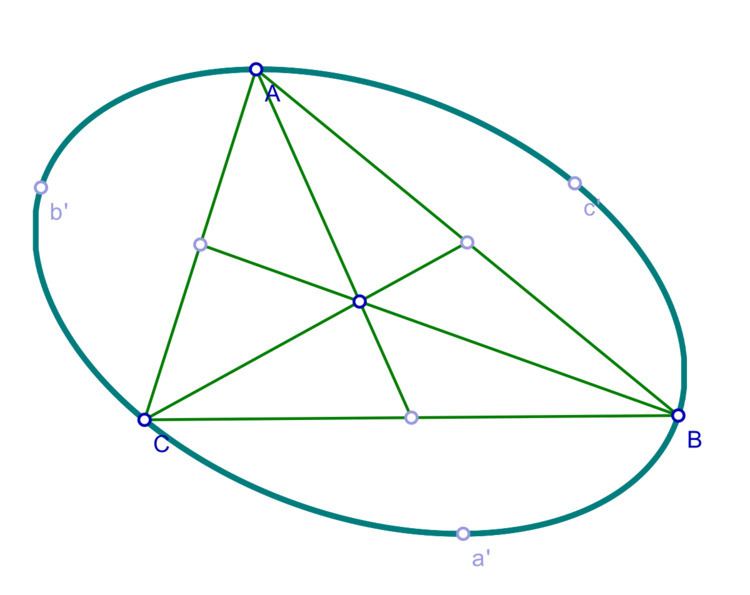 | ||
In geometry, the Steiner ellipse of a triangle, also called the Steiner circumellipse to distinguish it from the Steiner inellipse, is the unique circumellipse (ellipse that touches the triangle at its vertices) whose center is the triangle's centroid. Named after Jakob Steiner, it is an example of a circumconic. By comparison the circumcircle of a triangle is another circumconic that touches the triangle at its vertices, but is not centered at the triangle's centroid unless the triangle is equilateral.
Contents
The area of the Steiner ellipse equals the area of the triangle times
Trilinear equation
The equation of the Steiner circumellipse in trilinear coordinates is
for side lengths a, b, c.
Axes and foci
The semi-major and semi-minor axes have lengths
and focal length
where
The foci are called the Bickart points of the triangle.
Cartesian coordinates
Given a triangle with vertices
the linear problem
can be solved, and the reciprocals of the eigenvalues of the matrix form of the solution
are 3 times the squared lengths of the semi-major axis and semi-minor axis; the corresponding eigenvectors relate to the orientation. This approach generalizes to higher dimensions.
